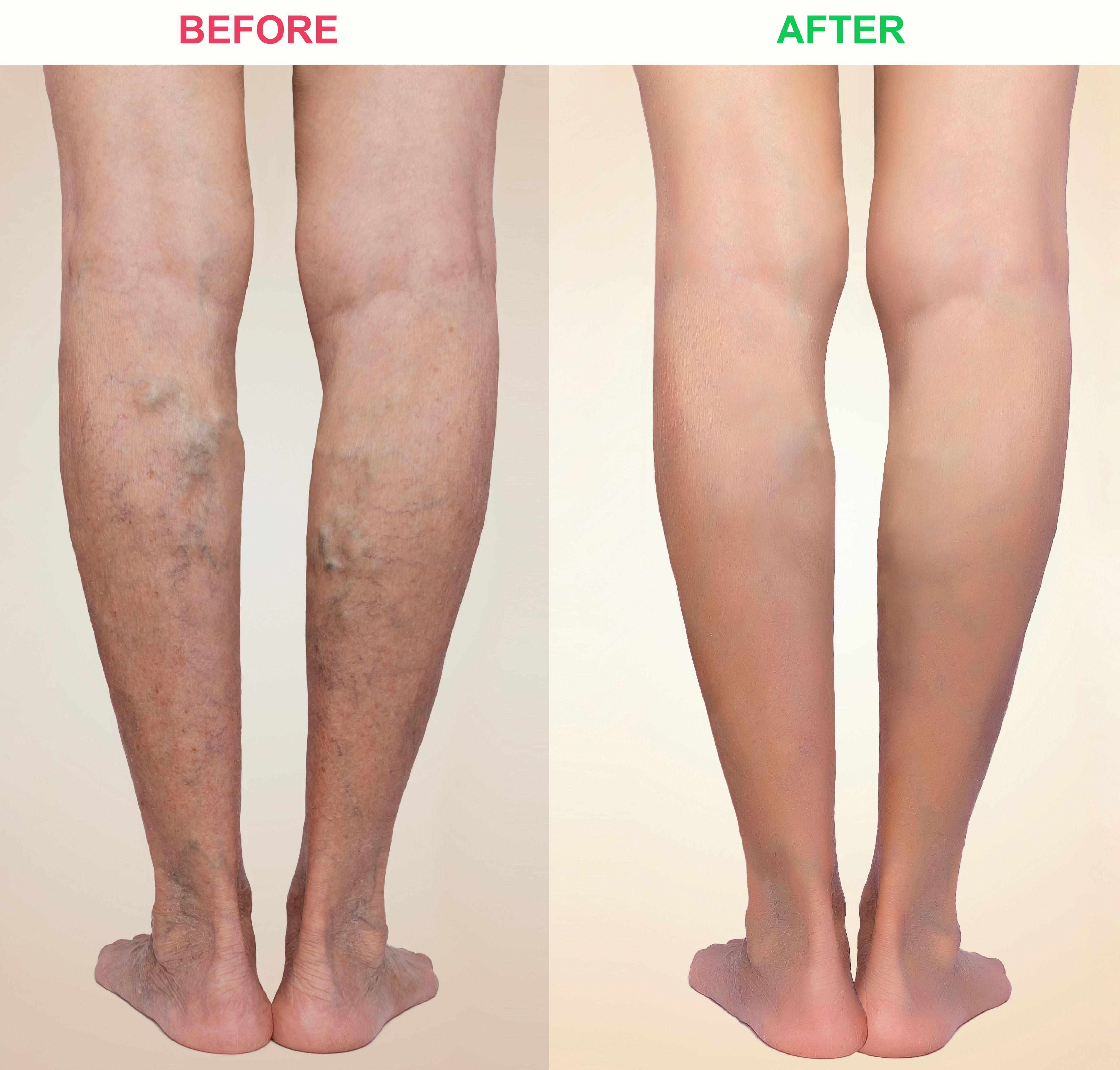Endovenous laser therapy (EVLT) of the saphenous vein, also referred to as endovenous laser ablation, is a minimally invasive, image-guided procedure to treat a varicose saphenous vein in the leg, which is usually the main superficial vein associated with varicose veins.
Endovenous (inside the vein) laser ablation of the saphenous vein involves inserting a catheter (a thin flexible tube) attached with a laser source into the vein through a tiny skin puncture, and treating the entire length of the vein with laser energy, causing ablation (destruction) of the vein wall. This causes the saphenous vein to close and gradually turn into scar tissue. This treatment of the saphenous vein also aids in regression of visible varicose veins.
Indications
Endovenous laser therapy is mainly indicated for the treatment of varicosities in the saphenous veins mainly caused by high blood pressure within the vein walls. Factors such as hormonal changes, obesity, lack of physical activity, prolonged standing, and pregnancy can increase the risk of varicose veins.
Procedure
Endovenous laser ablation of the saphenous vein usually takes less than an hour and is done on an out-patient basis. Generally, the procedure will involve the following steps:
- 1.You will lie down on the procedure table in a face-down or face-up position depending on the site of treatment.
- 2.An imaging technique, such as ultrasound, is utilized to guide your doctor throughout the procedure.
- 3.The leg to be treated is administered with a numbing medication to reduce any discomfort.
- 4.Once the skin is numb, a needle is used to make a small puncture hole in the saphenous vein.
- 5.A catheter (thin tube) providing the laser heat source is placed into the affected vein.
- 6.Additional numbing medication may be administered around the vein prior to ablating (destroying) the varicose saphenous vein.
- 7.Using imaging assistance, the catheter is guided to the treatment site, and the laser fiber at the end of the catheter is fired up to heat up the entire length of the vein and seal it closed. This results in stopping blood flow through the vein.
- 8.The saphenous vein eventually shrinks and fades away, eliminating vein bulging at its source and allowing efficient blood circulation through other healthy veins.
The catheter and laser are removed, and the puncture hole is covered with a small dressing.
Endovenous laser ablation of the saphenous vein usually takes less than an hour and is done on an out-patient basis. Generally, the procedure will involve the following steps:
- 1.You will lie down on the procedure table in a face-down or face-up position depending on the site of treatment.
- 2.An imaging technique, such as ultrasound, is utilized to guide your doctor throughout the procedure.
- 3.The leg to be treated is administered with a numbing medication to reduce any discomfort.
- 4.Once the skin is numb, a needle is used to make a small puncture hole in the saphenous vein.
- 5.A catheter (thin tube) providing the laser heat source is placed into the affected vein.
- 6.Additional numbing medication may be administered around the vein prior to ablating (destroying) the varicose saphenous vein.
- 7.Using imaging assistance, the catheter is guided to the treatment site, and the laser fiber at the end of the catheter is fired up to heat up the entire length of the vein and seal it closed. This results in stopping blood flow through the vein.
- 8.The saphenous vein eventually shrinks and fades away, eliminating vein bulging at its source and allowing efficient blood circulation through other healthy veins.
Post Procedure care
In general, postoperative care instructions and recovery after endovenous laser therapy will involve the following steps:
- 1.You may experience pain and swelling in the treated leg. Medications are prescribed as needed to address these.
- 2.Application of ice packs over the treatment area is also recommended for 10 minutes at a time for a few days to manage bruising, swelling, or pain.
- 3.You are advised to wear compression stockings for a few days to weeks as this can help prevent blood pooling or clotting, as well as swelling of the leg.
Post time: Jun-05-2023

